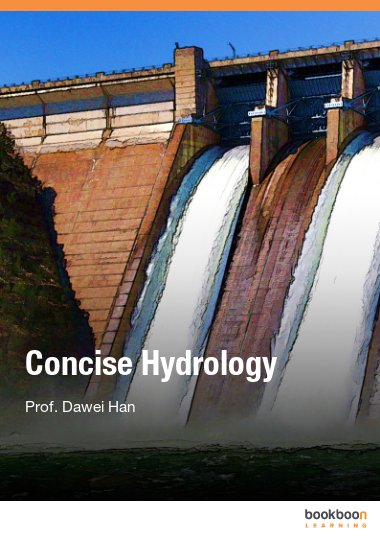Hydrology is a branch of scientific and engineering discipline that deals with the occurrence, distribution, movement, and properties of the waters of the earth. A knowledge of hydrology is fundamental to water and environmental professionals (engineers, scientists and decision makers) in such tasks as the design and operation of water resources, wastewater treatment, irrigation, flood defence, navigation, pollution control, hydropower, ecosystem modelling, etc. This is an introductory book on hydrology and written for undergraduate students in civil and environmental engineering, environmental science and geography. The aim of this book is to provide a concise coverage of key contents in hydrology that is easy to access through the Internet.
The book covers the fundamental theories on hydrological cycle (water balance, atmospheric water, subsurface water, surface water), precipitation analysis, evaporation and evapotranspiration processes, infiltration, ground water movement, hydrograph analysis, rainfall runoff modelling (unit hydrograph), hydrological flow routing, measurements and data collection, hydrological statistics and hydrological design. The text has been written in a concise format that is integrated with the relevant graphics. There are many examples to further explain the theories introduced. The questions at the end of each chapter are accompanied by the corresponding answers and full solutions. A list of recommended reading resources is provided in the appendix for readers to further explore the interested hydrological topics.
Dawei Han
Reader in Civil and Environmental Engineering,

